| View previous topic :: View next topic |
| Author |
Message |
kymarto


Joined: 30 Nov 2016
Posts: 406
Location: Portland, OR and Milan, Italy
|
 Posted: Thu Mar 30, 2023 4:16 pm Post subject: Kinon Superior I 5cm f1.6 projection lens Posted: Thu Mar 30, 2023 4:16 pm Post subject: Kinon Superior I 5cm f1.6 projection lens |
 |
|
kymarto wrote:
I have been keeping my eye out for one of these for some years, and finally found one for a quite reasonable price (210 euros). I must say that I have been quite pleasantly surprised at both the character and performance of this lens. I knew that it was quite swirly, but I was not prepared for the excellent sharpness and contrast in the center, and the wild bokeh. Performance close up is excellent. I knew that these lenses had a good reputation, and know I know why. TRIGGER WARNING: these images are processed. I have removed the vignette (the lens covers FF, though with quite a lot of falloff). I use deconvolution sharpening and of course have optimized the light values, as I often shoot for highlights, which makes the original SOOC images quite dark. I use noise reduction when necessary and a slight amount if what PS calls "texture". This does not, as some here contend, hide the characteristics of the lens, but actually highlights them. Anyway, if you don't like it, just move on, nothing for you to see here.
#1
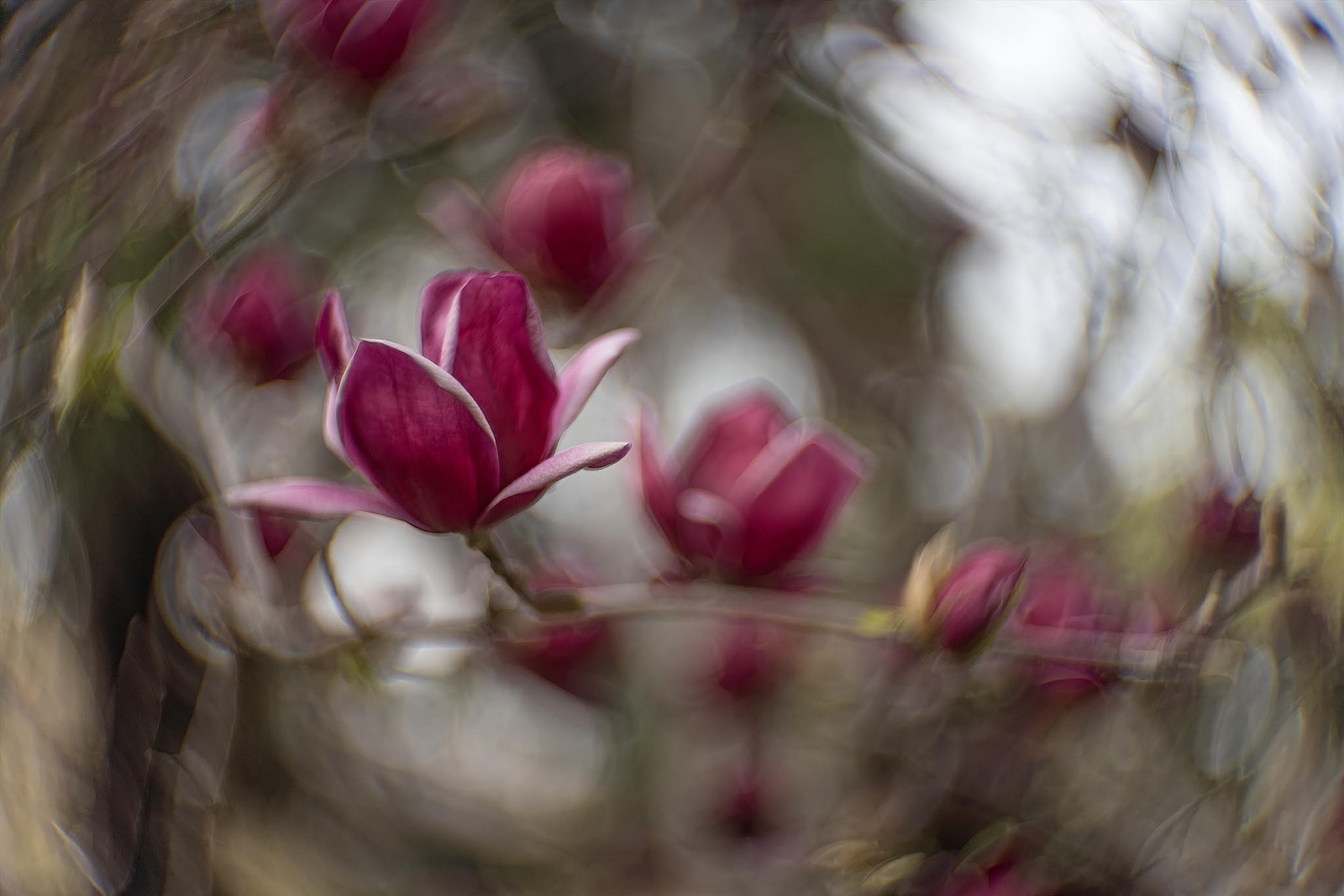
#2

#3
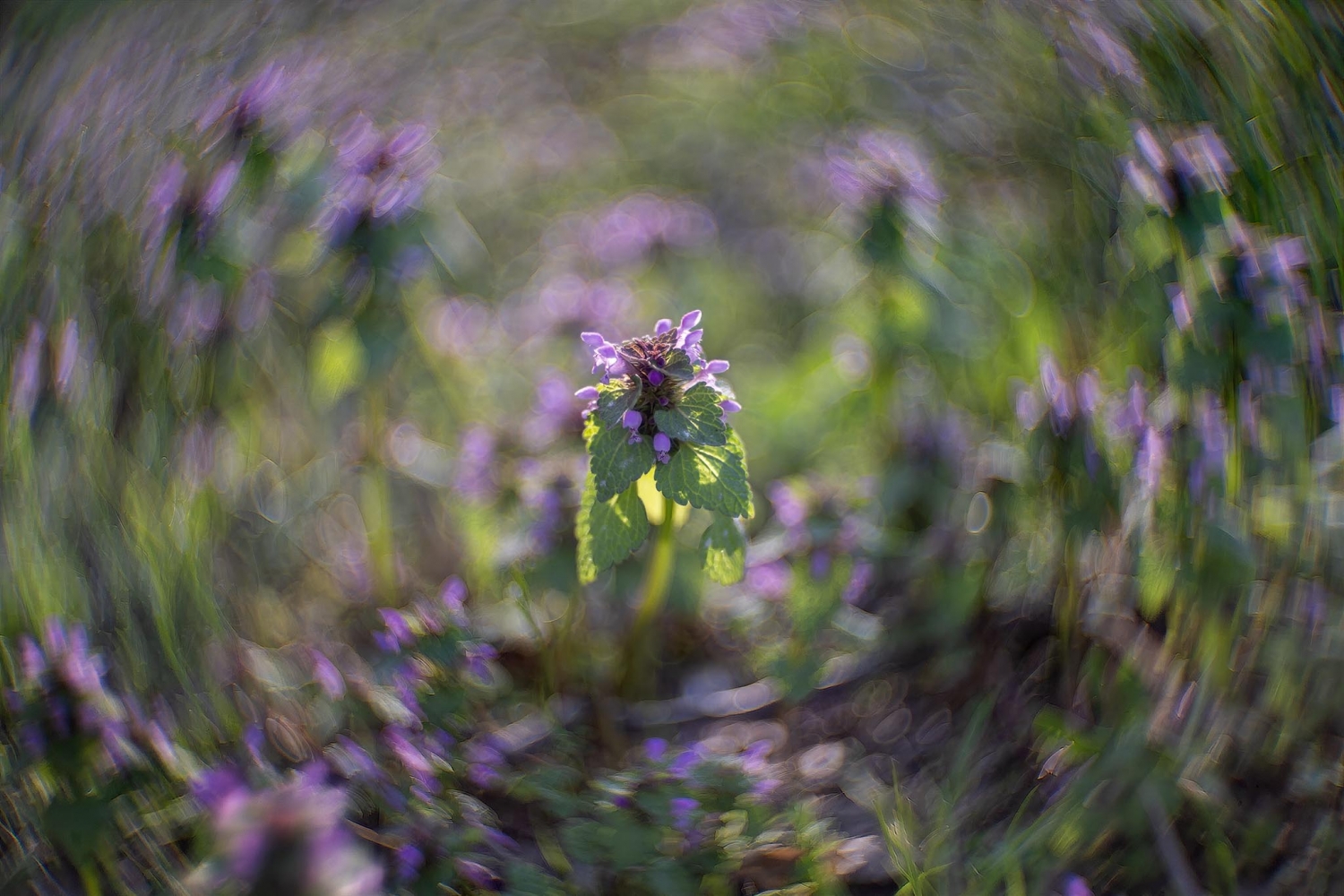
#4
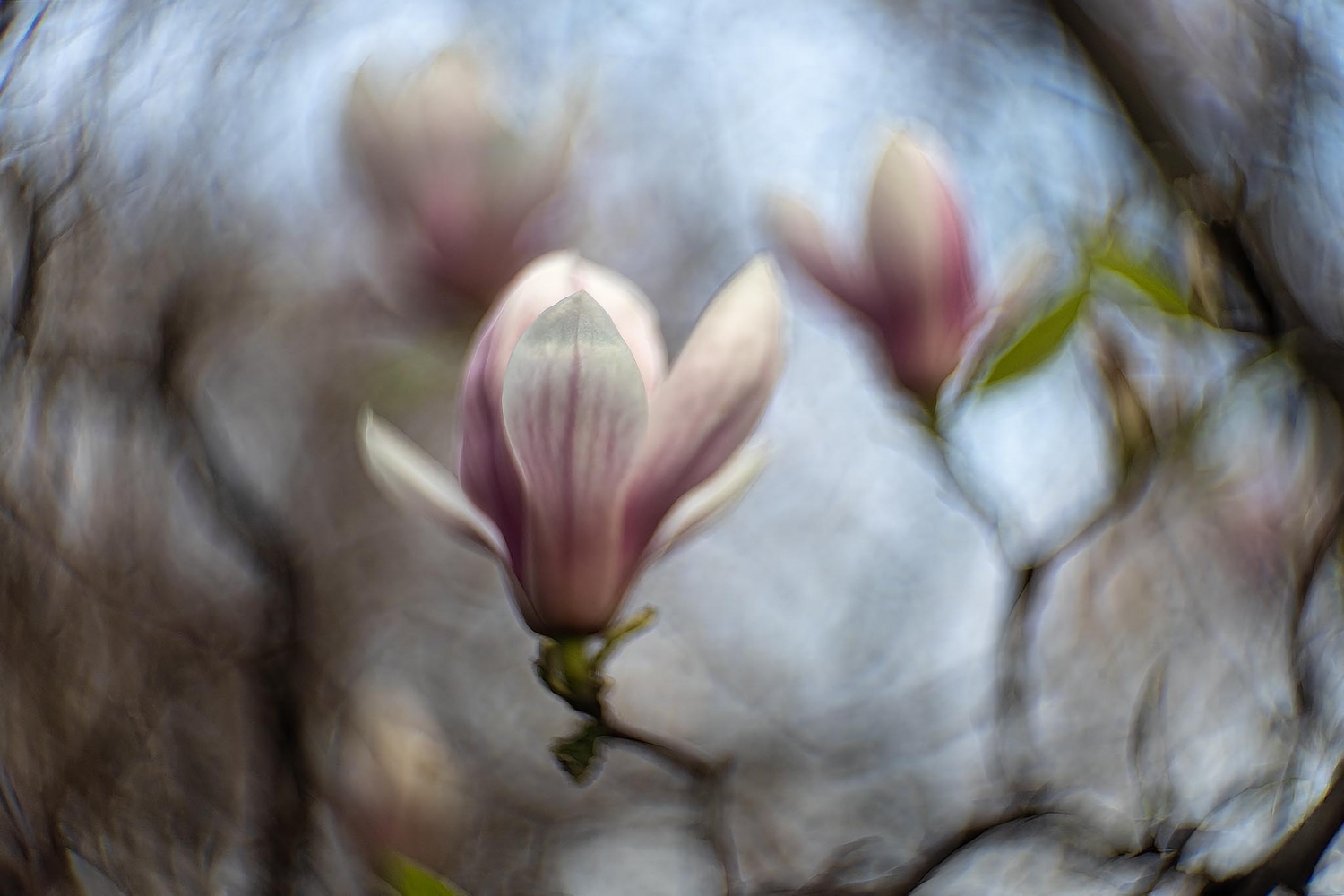
#5

#6
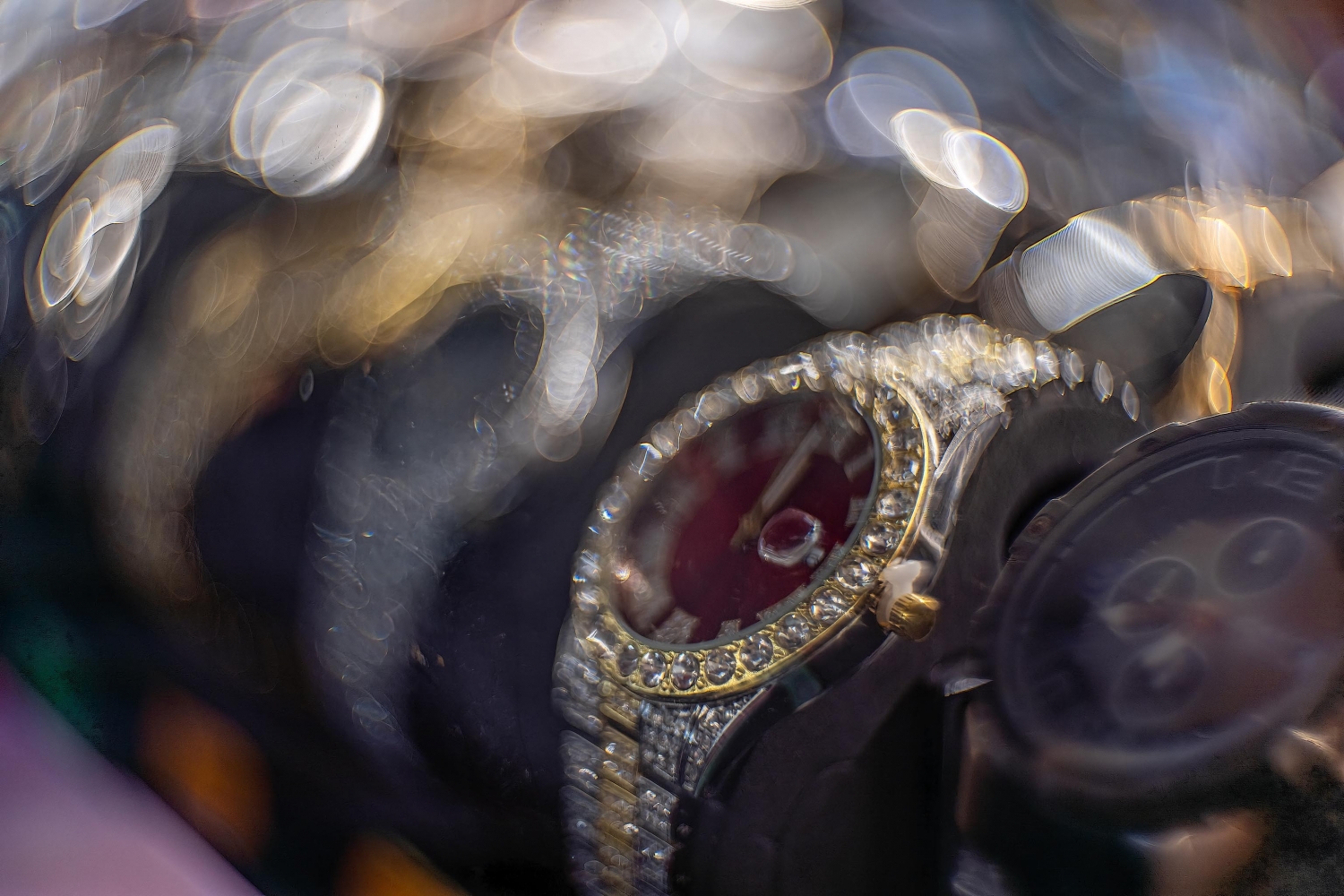
#7
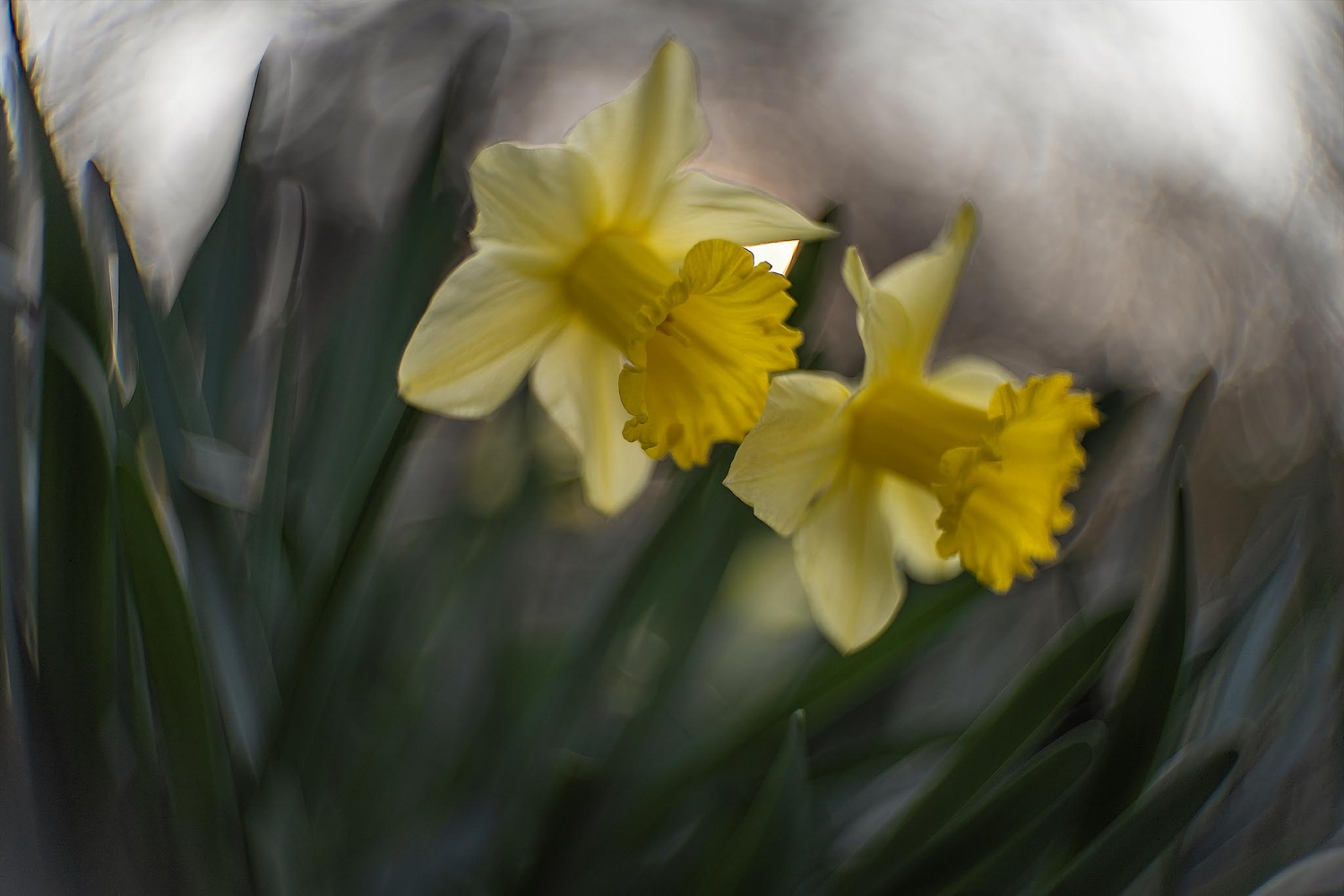
#8

#9

#10

#11

#12
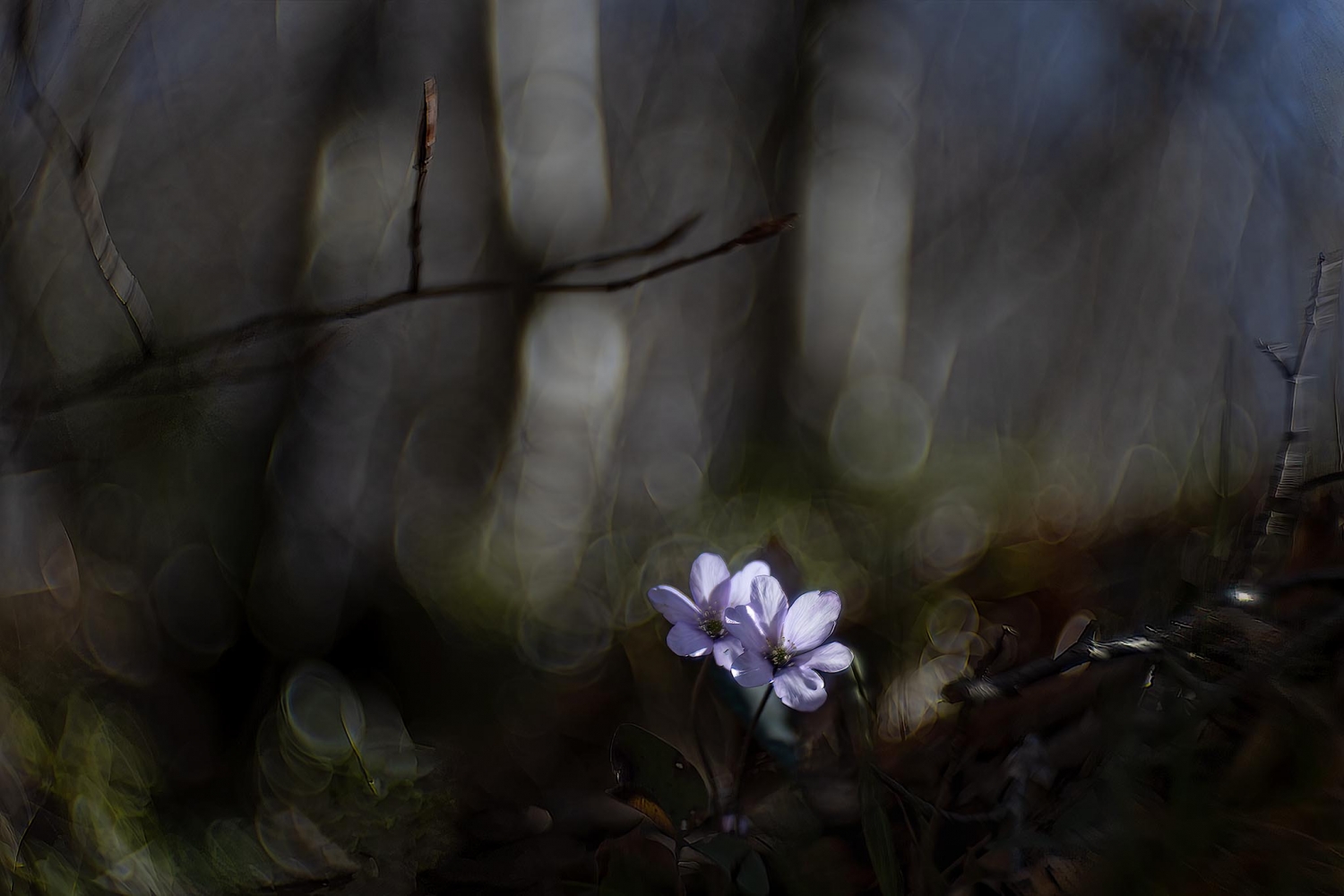
_________________
Vintage lens aficionado |
|
| Back to top |
|
 |
simple.joy


Joined: 30 May 2022
Posts: 439
|
 Posted: Thu Mar 30, 2023 4:40 pm Post subject: Posted: Thu Mar 30, 2023 4:40 pm Post subject: |
 |
|
simple.joy wrote:
Wonderful shots! 👍 And I like the processing as well. Excellent work and a really interesting lens. I‘ve used the 1.8 version a couple of times recently and like it a lot. The rendering is really nice.
_________________
---
Manual lens enthusiast
https://www.flickr.com/photos/simple_joy/ |
|
| Back to top |
|
 |
kymarto


Joined: 30 Nov 2016
Posts: 406
Location: Portland, OR and Milan, Italy
|
 Posted: Thu Mar 30, 2023 4:49 pm Post subject: Posted: Thu Mar 30, 2023 4:49 pm Post subject: |
 |
|
kymarto wrote:
| simple.joy wrote: |
| Wonderful shots! 👍 And I like the processing as well. Excellent work and a really interesting lens. I‘ve used the 1.8 version a couple of times recently and like it a lot. The rendering is really nice. |
Yes, the f1.8 is quite similar. I have one that has a flipped rear element, and I've decided to leave it that way because the results are really wild
#1

#2

#3
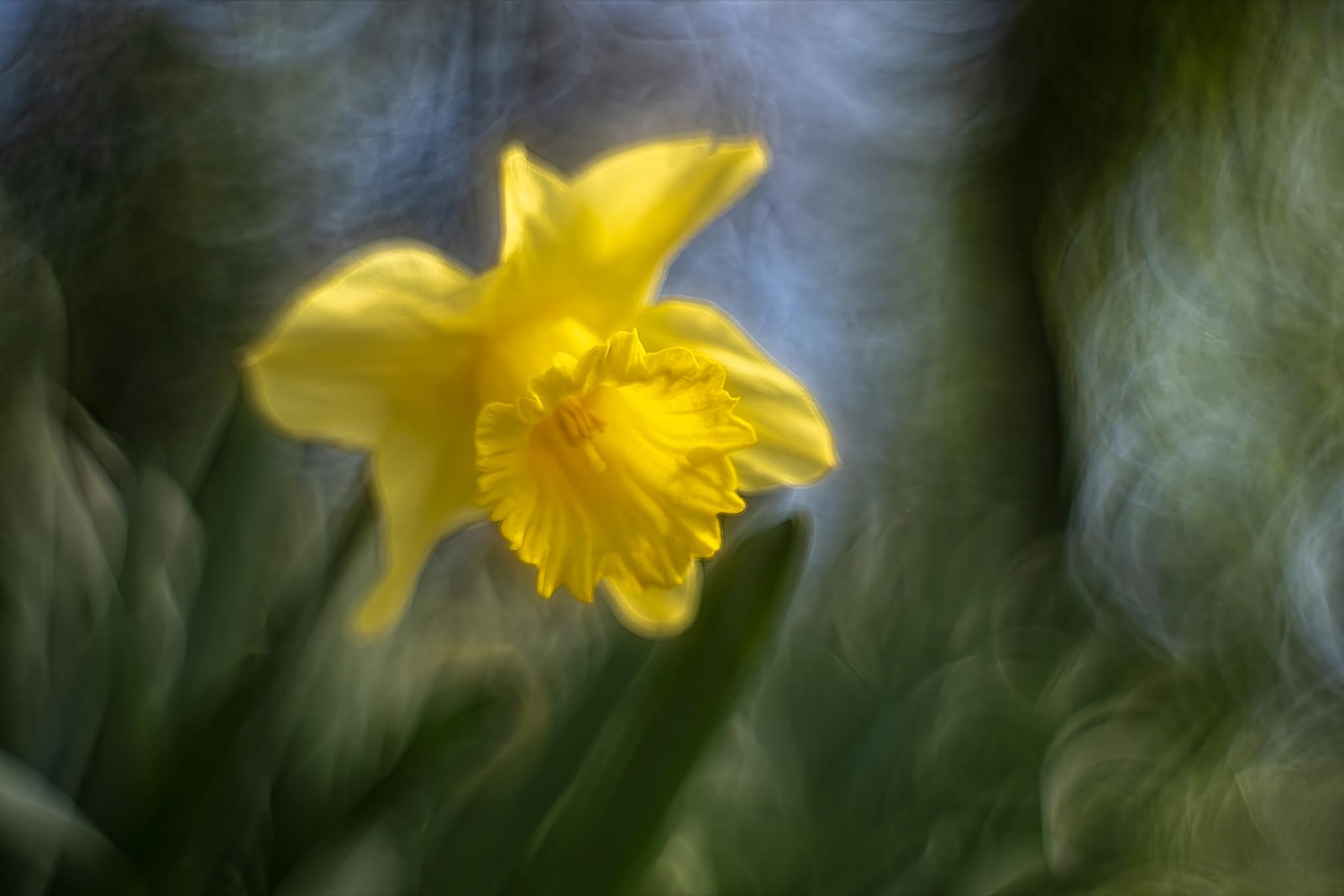
#4

#5

#6

_________________
Vintage lens aficionado |
|
| Back to top |
|
 |
Ultrapix

Joined: 06 Jan 2012
Posts: 551
Location: Italy
|
 Posted: Thu Mar 30, 2023 4:49 pm Post subject: Posted: Thu Mar 30, 2023 4:49 pm Post subject: |
 |
|
Ultrapix wrote:
Really nice! |
|
| Back to top |
|
 |
Pancolart


Joined: 04 Feb 2008
Posts: 3693
Location: Slovenia, EU
Expire: 2013-11-18
|
 Posted: Thu Mar 30, 2023 7:23 pm Post subject: Posted: Thu Mar 30, 2023 7:23 pm Post subject: |
 |
|
Pancolart wrote:
Wicked!
_________________
---------------------------------
The Peculiar Apparatus Of Victorian Steampunk Photography: 100+ Genuine Steampunk Camera Designs https://www.amazon.com/dp/B0B92829NS |
|
| Back to top |
|
 |
iangreenhalgh1


Joined: 18 Mar 2011
Posts: 15685
Expire: 2014-01-07
|
 Posted: Thu Mar 30, 2023 8:11 pm Post subject: Posted: Thu Mar 30, 2023 8:11 pm Post subject: |
 |
|
iangreenhalgh1 wrote:
| Quote: |
| This does not hide the characteristics of the lens, but actually highlights them |
PMSL, you keep telling yourself that, but it's nonsense.
Without all the overdone processing, it's quite an interesting lens:
https://www.flickr.com/photos/leo_roos/albums/72157689069117636/
It's a Petzval and a characteristic of the Petzval design is that only a small central portion of the image cirle is rendered with much acuity, the rest is a swirly mess and light falloff is rather severe - the outer half of the image circle displays a steady but very marked falloff of intensity. For this reason, the usual length of a Petzval to cover a 35mm frame would be 5 or 6 inches, I have a few of those, if you know what to look for, they are costly (although not as cheap as they were a few years ago when they were close to worthless) and aren't hard to find as they were once extremely common as every cinema had loads of them and there were cinemas everywhere.
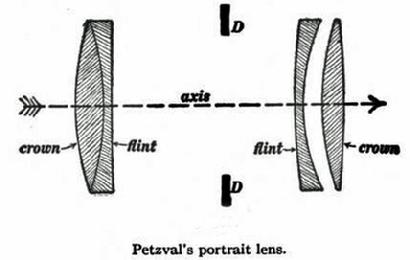
It's a shame people tend to only focus on their wild bokeh when they make such good portrait lenses (their original application):
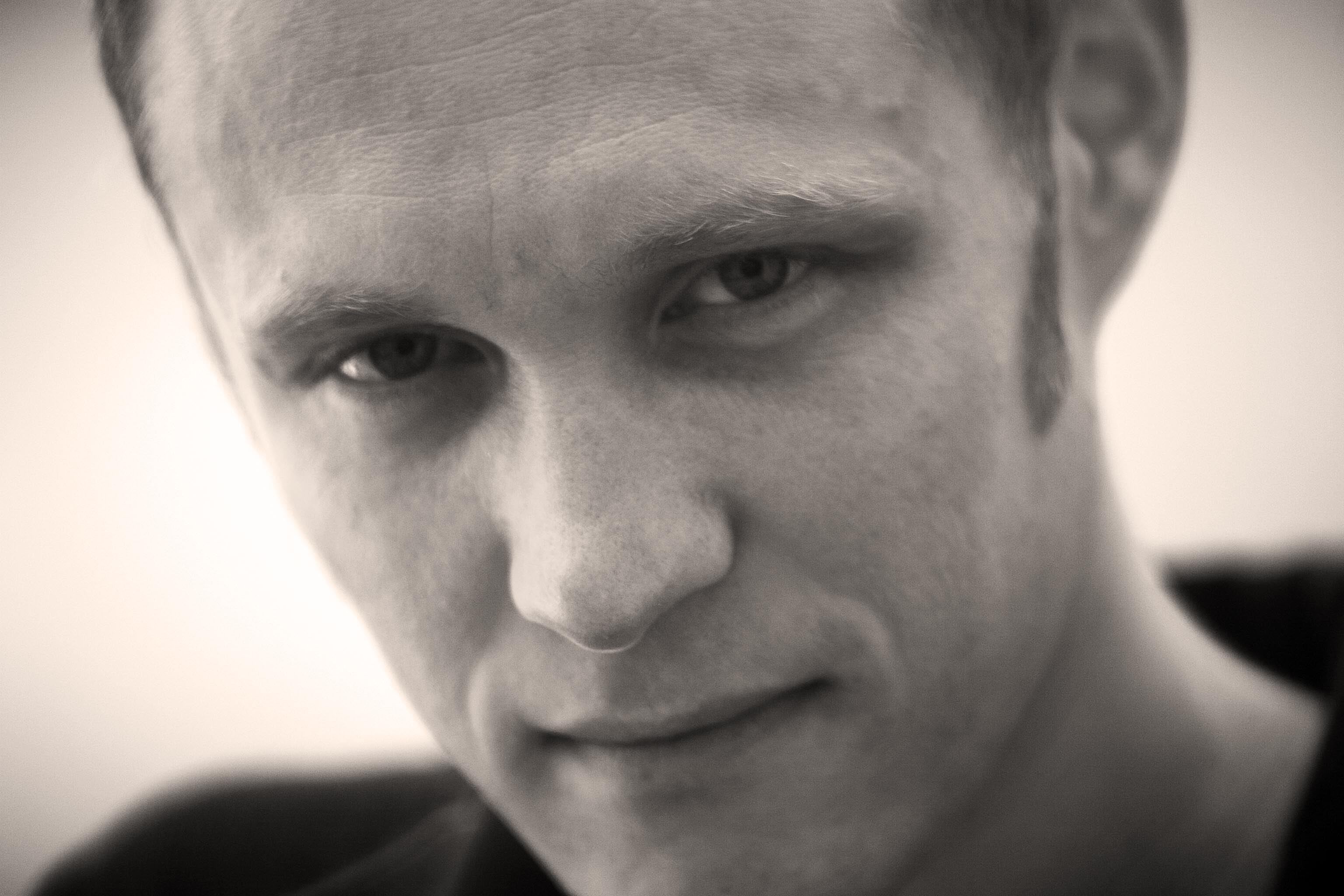

_________________
I don't care who designed it, who made it or what country it comes from - I just enjoy using it! |
|
| Back to top |
|
 |
kymarto


Joined: 30 Nov 2016
Posts: 406
Location: Portland, OR and Milan, Italy
|
 Posted: Thu Mar 30, 2023 8:38 pm Post subject: Posted: Thu Mar 30, 2023 8:38 pm Post subject: |
 |
|
kymarto wrote:
I have a fair number of Petzval lenses, maybe 20 or so, and while their basic character is similar, they vary quite widely in their rendering. This Kinon is uncommonly sharp and contrasty in the center for a fast Petzval, and even off axis it is possible to focus for sharp results, though obviously not in the plane of focus on-axis. The bokeh rendering is not typical for a Petzval, as OOF elements have strong ni-sen bokeh, possibly indicating spherical overcorrection. And the level of sagittal coma is off the charts, rendering COCs as curved lines at the edge of frame. This is much more exaggerated than in my other Petzvals. The Elgeet Cine Navitar 2 inch f1.5 has somewhat similar bokeh, but with somewhat less coma, and with a much smaller image circle. Both those lenses are designed for the 16mm format, but the Kinon has a much larger central "sweet spot“, I imagine due to its 50% larger image circle, making it possible to compose shots with the subject off center.
I do agree about the value of Petzval lenses for portraits and people shots, when the blur off axis focuses the eye on the subject in the sharp center, and I often use a longer Petzval for such things, like these with a 100mm Angenieux Type 86 f1.4. which easily covers FF. 5 cm is a bit short for portraits.
#1

#2

#3

#4
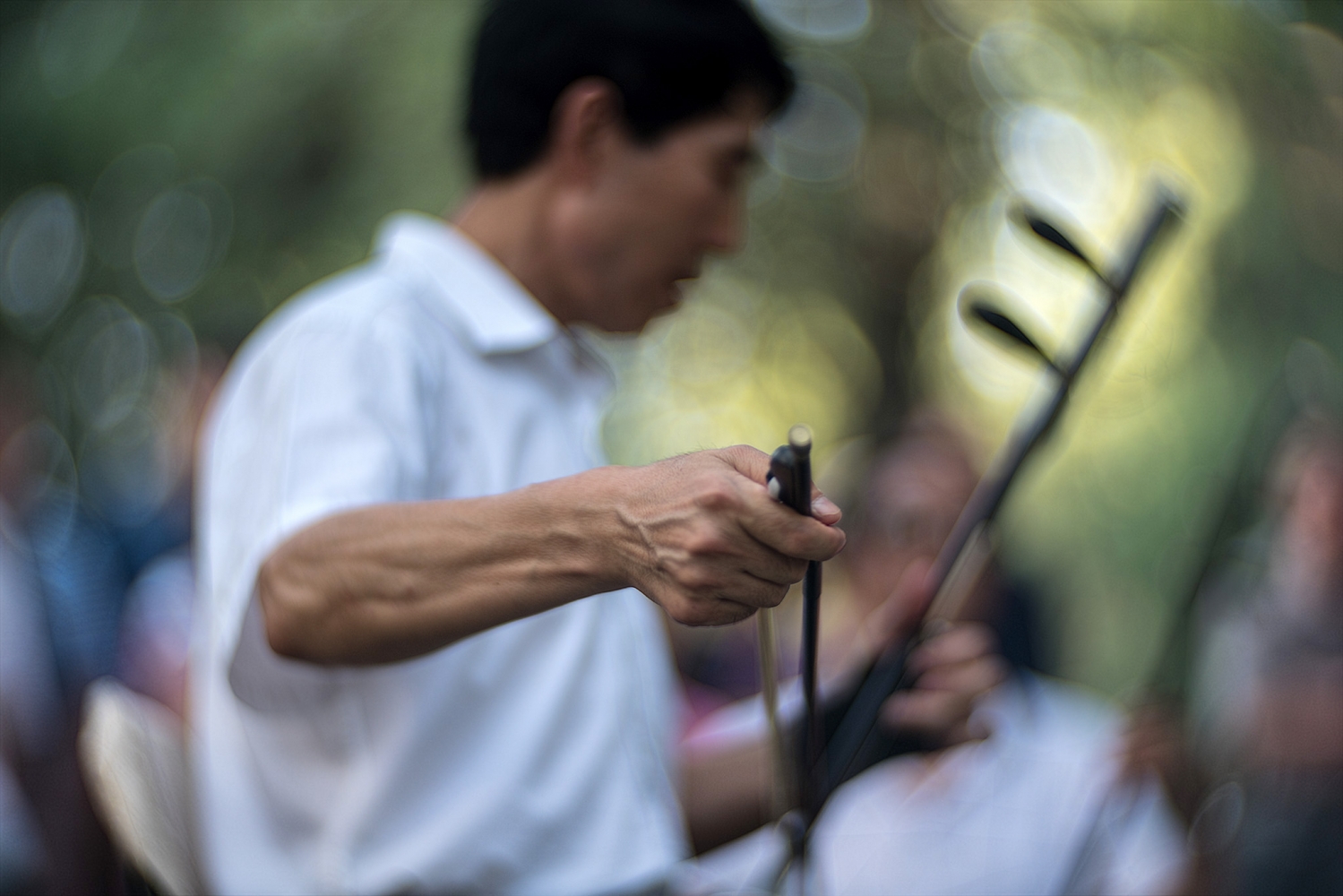
#5
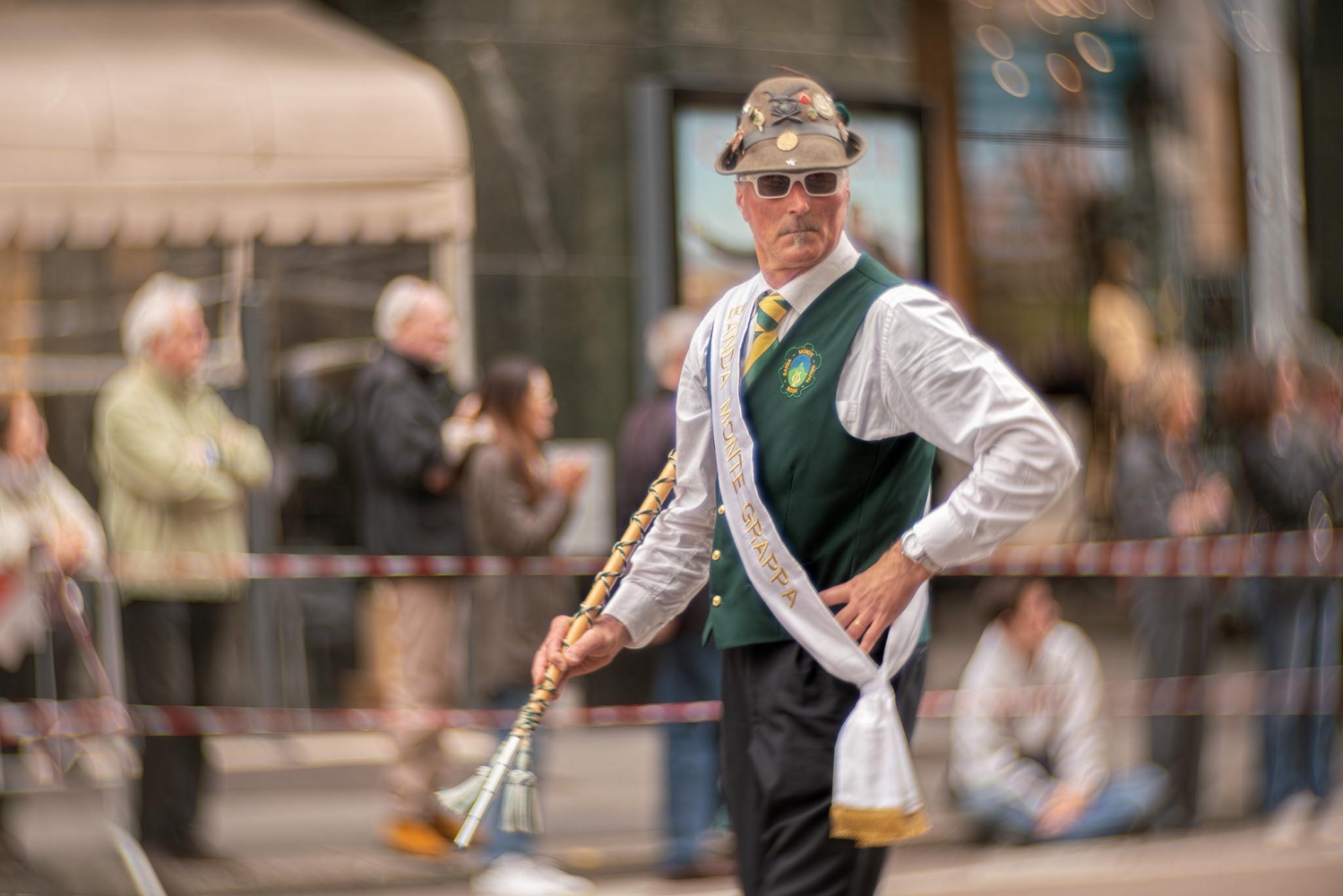
#6

#7
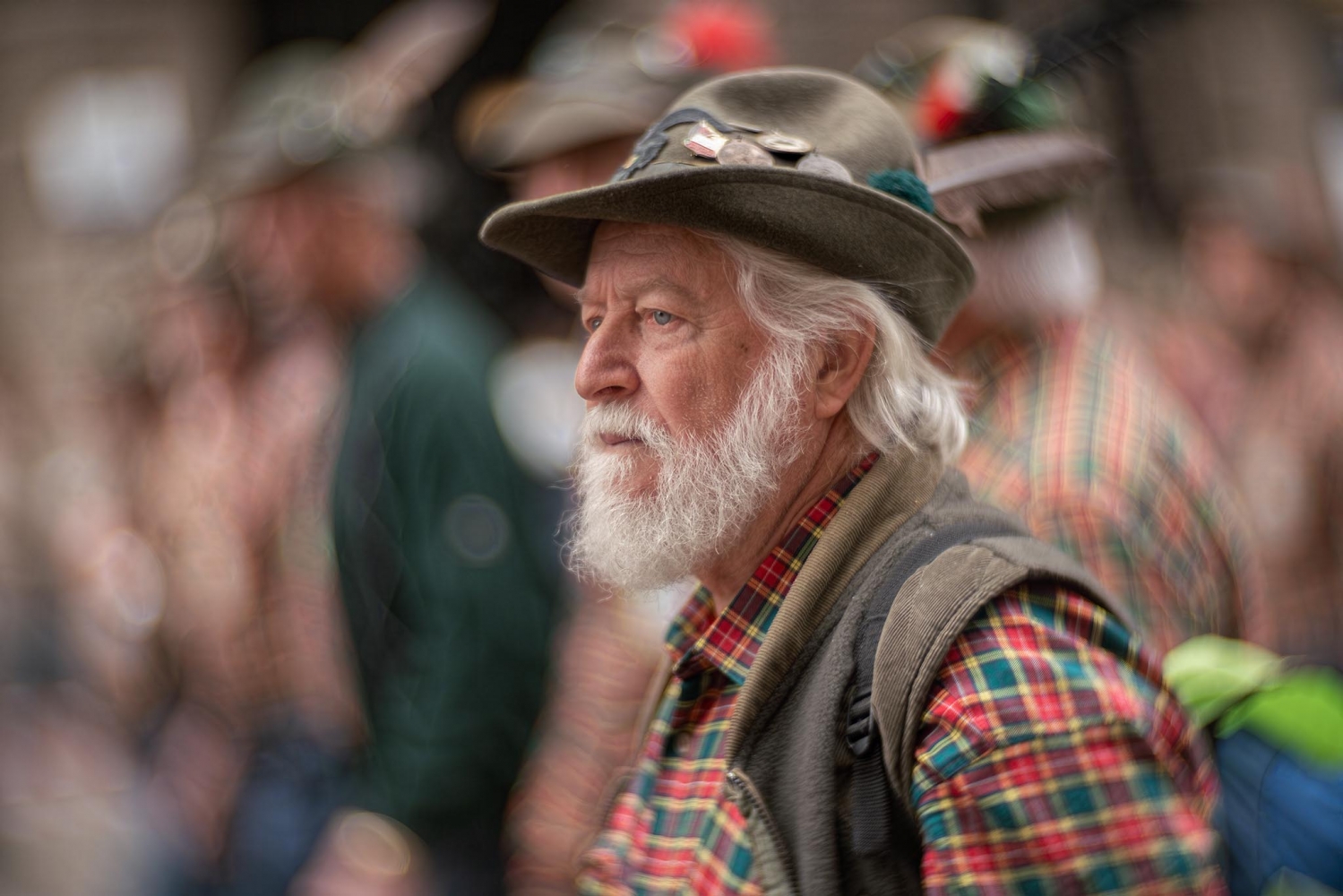
#8

#9

#10

#11

#12

#13

#14
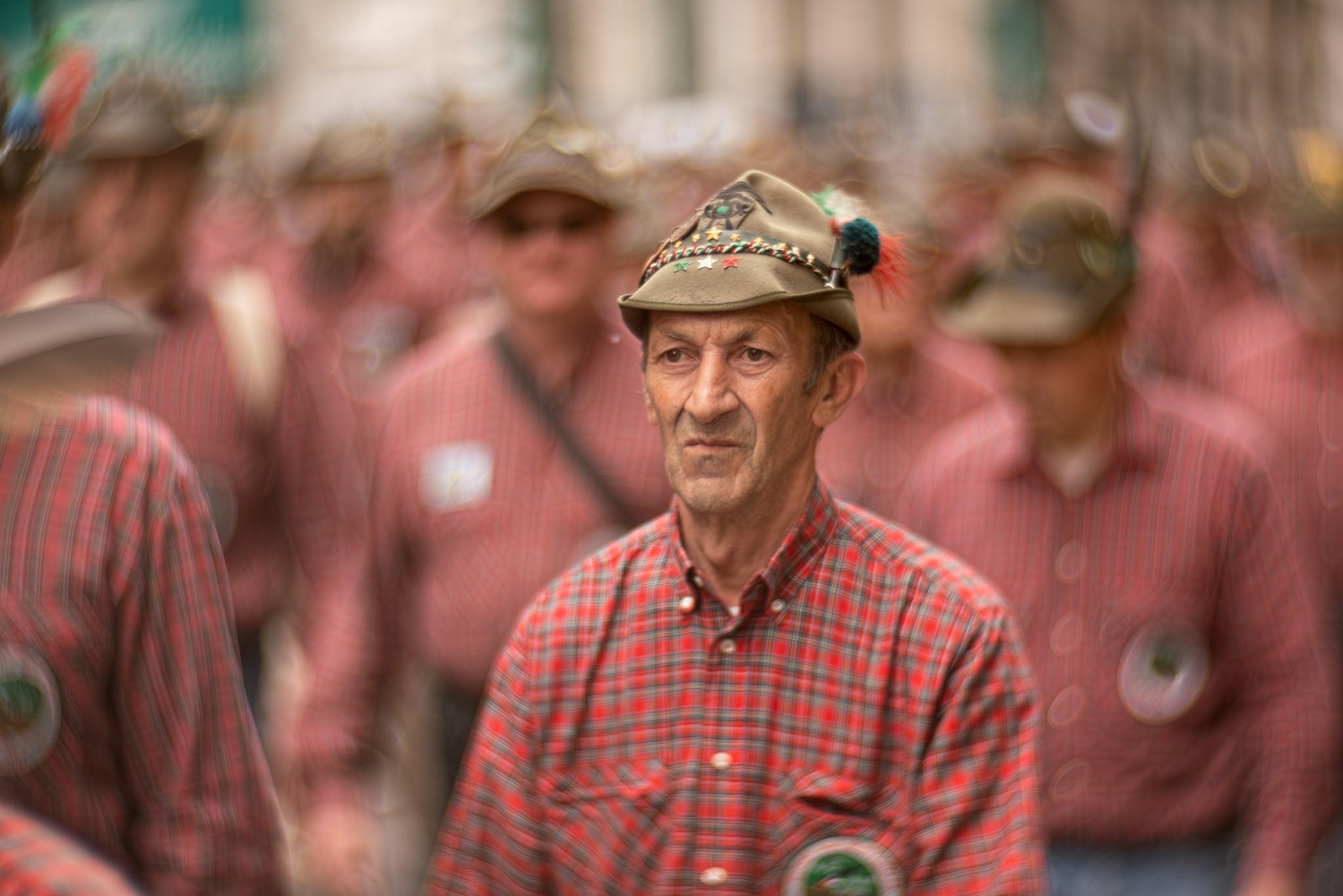
_________________
Vintage lens aficionado |
|
| Back to top |
|
 |
eggplant


Joined: 27 May 2020
Posts: 516
|
 Posted: Thu Mar 30, 2023 9:23 pm Post subject: Posted: Thu Mar 30, 2023 9:23 pm Post subject: |
 |
|
eggplant wrote:
One day I will sort out a suitable helicoid for my Petzvals, because I really like these results.
What's the flange distance on this one like?
_________________
UK |
|
| Back to top |
|
 |
Doc Sharptail


Joined: 23 Nov 2020
Posts: 992
Location: Winnipeg Canada
|
 Posted: Thu Mar 30, 2023 9:50 pm Post subject: Posted: Thu Mar 30, 2023 9:50 pm Post subject: |
 |
|
Doc Sharptail wrote:
Great timing and great shot on frame #13 just above!
 
-D.S.
_________________
D-810, F2, FTN.
35mm f2 O.C. nikkor
50 f2 H nikkor, 50 f 1.4 AI-s, 135 f3.5 Q,
50 f2 K nikkor 2x, 28-85mm f3.5-4.5 A/I-s, 35-105 3.5-4.5 A/I-s, 200mm f4 Micro A/I, partial list.
"Ain't no half-way" -S.R.V.
"Oh Yeah... Alright" -Paul Simon |
|
| Back to top |
|
 |
iangreenhalgh1


Joined: 18 Mar 2011
Posts: 15685
Expire: 2014-01-07
|
 Posted: Thu Mar 30, 2023 10:05 pm Post subject: Posted: Thu Mar 30, 2023 10:05 pm Post subject: |
 |
|
iangreenhalgh1 wrote:
| Quote: |
| This Kinon is uncommonly sharp and contrasty in the center for a fast Petzval |
Can't tell due to the over processing, all Petzvals are sharp in the centre, contrast is down to a number of factors other than the lens itself, often painting the interior surfaces black makes a big difference and in most projection petzvals they didn't bother.
| Quote: |
| and even off axis it is possible to focus for sharp results, though obviously not in the plane of focus on-axis. |
Same is true of all Petzvals - they have a very curved field which accounts for what you describe.
| Quote: |
| The bokeh rendering is not typical for a Petzval, |
Yes it is, despite your best efforts to hide that beneath thick layers of post processing
| Quote: |
| possibly indicating spherical overcorrection. |
Nope, all Petzvals have a large amount of undercorrection for spherical aberration.
_________________
I don't care who designed it, who made it or what country it comes from - I just enjoy using it! |
|
| Back to top |
|
 |
kymarto


Joined: 30 Nov 2016
Posts: 406
Location: Portland, OR and Milan, Italy
|
 Posted: Fri Mar 31, 2023 11:11 pm Post subject: Posted: Fri Mar 31, 2023 11:11 pm Post subject: |
 |
|
kymarto wrote:
| iangreenhalgh1 wrote: |
| Quote: |
| This Kinon is uncommonly sharp and contrasty in the center for a fast Petzval |
Can't tell due to the over processing, all Petzvals are sharp in the centre, contrast is down to a number of factors other than the lens itself, often painting the interior surfaces black makes a big difference and in most projection petzvals they didn't bother.
| Quote: |
| and even off axis it is possible to focus for sharp results, though obviously not in the plane of focus on-axis. |
Same is true of all Petzvals - they have a very curved field which accounts for what you describe.
| Quote: |
| The bokeh rendering is not typical for a Petzval, |
Yes it is, despite your best efforts to hide that beneath thick layers of post processing
| Quote: |
| possibly indicating spherical overcorrection. |
Nope, all Petzvals have a large amount of undercorrection for spherical aberration. |
In your determined effort to be contrary, you have made some significant misstatements. Let's explore them:
"Nope, all Petzvals have a large amount of undercorrection for spherical aberration"
Untrue. Petzval lenses are notable for having the ability to control spherical aberration and LoCa. But the actual correction spherical aberration will be dependent on the design of the lens, i.e. the glass types chosen and the element design and spacing. If you have some evidence for your claim that all Petzvals are spherically undercorrected, please provide it.
Generally speaking, good spherical aberration correction results in a COC disc that is smooth. Overcorrection results in a bright ring at the outer edge, and undercorrection results in a disc brighter at the center than at the edges, Here is an example from a Cooke Triplet which focuses by moving the front element, which changes the spherical aberration correction. It is deliberately overcorrected at infinity to render best at median distances, with severe undercorrection at closest focusing:
#1 Overcorrection
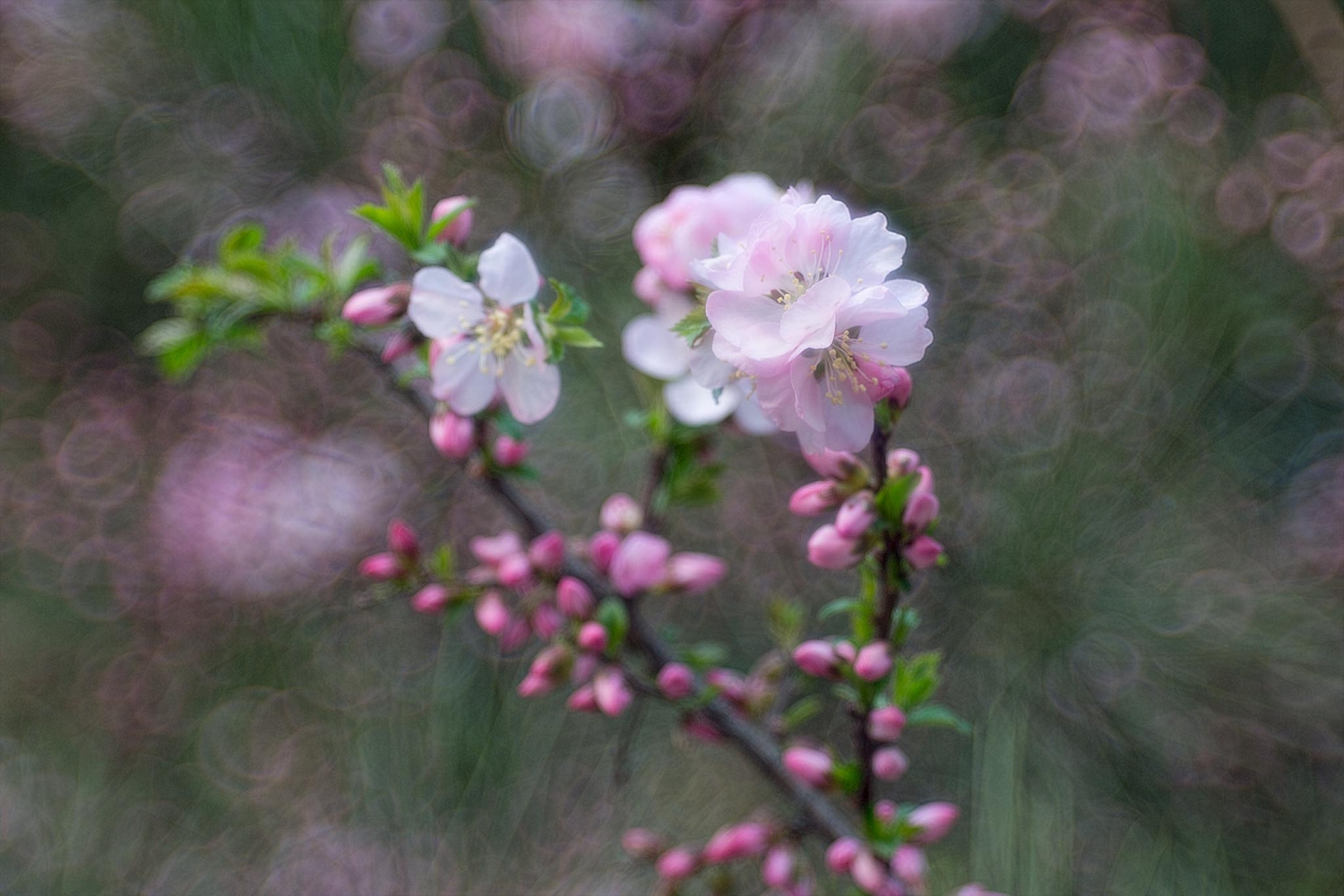
#2 Slight overcorrection

#3 Undercorrection

Note that both undercorrection and overcorrection cause loss of contrast and highlight blooming.
Now keeping that in mind, let's look at two different Petzval lenses and how they render COCs.Both are cine lenses, made by Elgeet for 16mm film cameras. The first is the 2 inch Cine Navitar f1.5 and the second the Cine Navitar 3 inch f1.9. It doesn't take a keen eye to see the difference in the COCs. That of the 2" have bright rings and those of the 3" are smooth. Both are quite sharp, but the 2 inch has signficant highlight blooming, whereas the contrast of the 3 inch is much better, with no highlight blooming. The latter is not easy to see in small images, but the story of the COCs is quite obvious. Note that the astigmatism is about equal, comparing the distorted disc shapes at the edges. These images are not processed, apart from correcting for corner light fall off.
#1 Elgeet Cine Navitar 2" f1.5
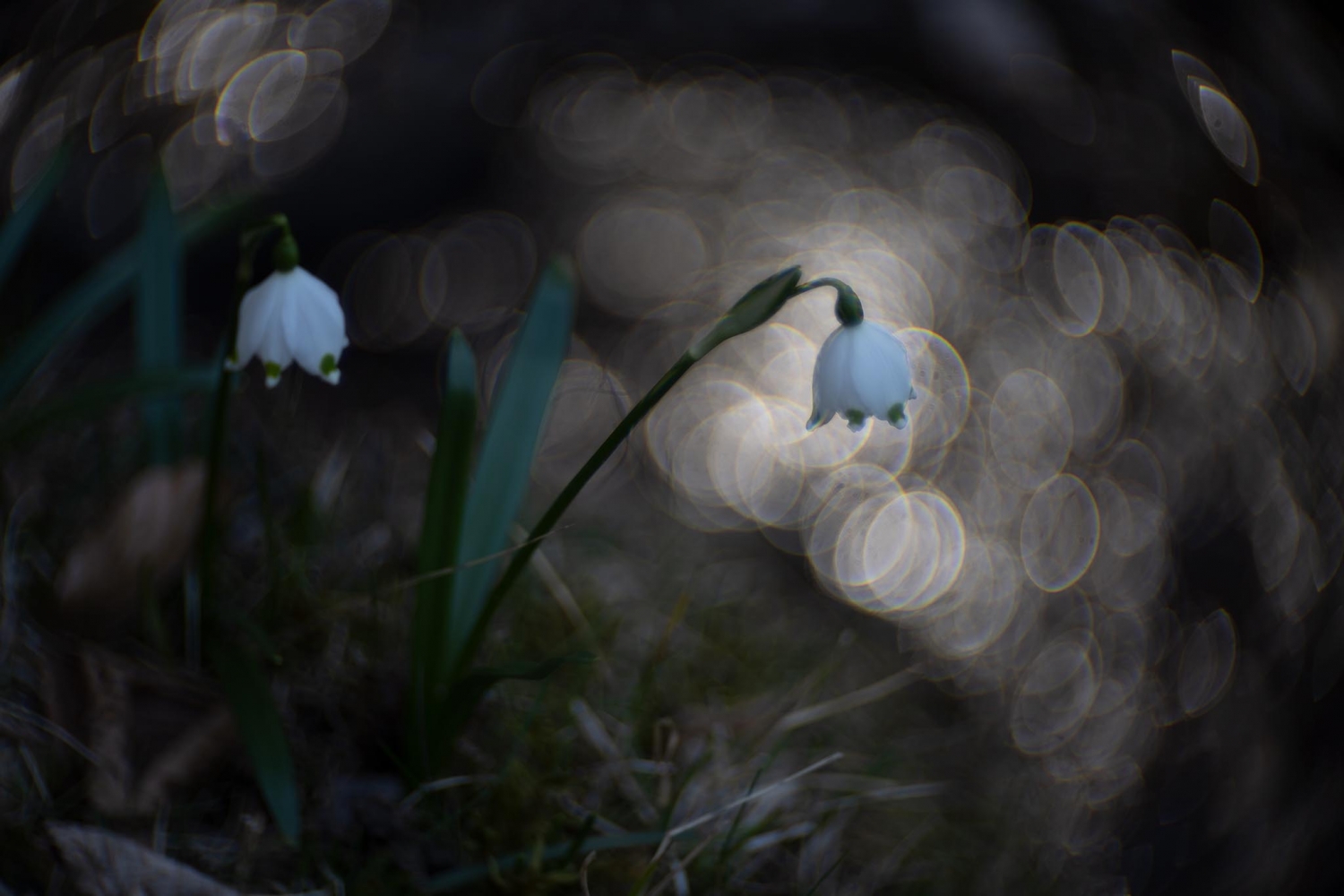
#2 Elgeet Cine Navitar 3" f1.9
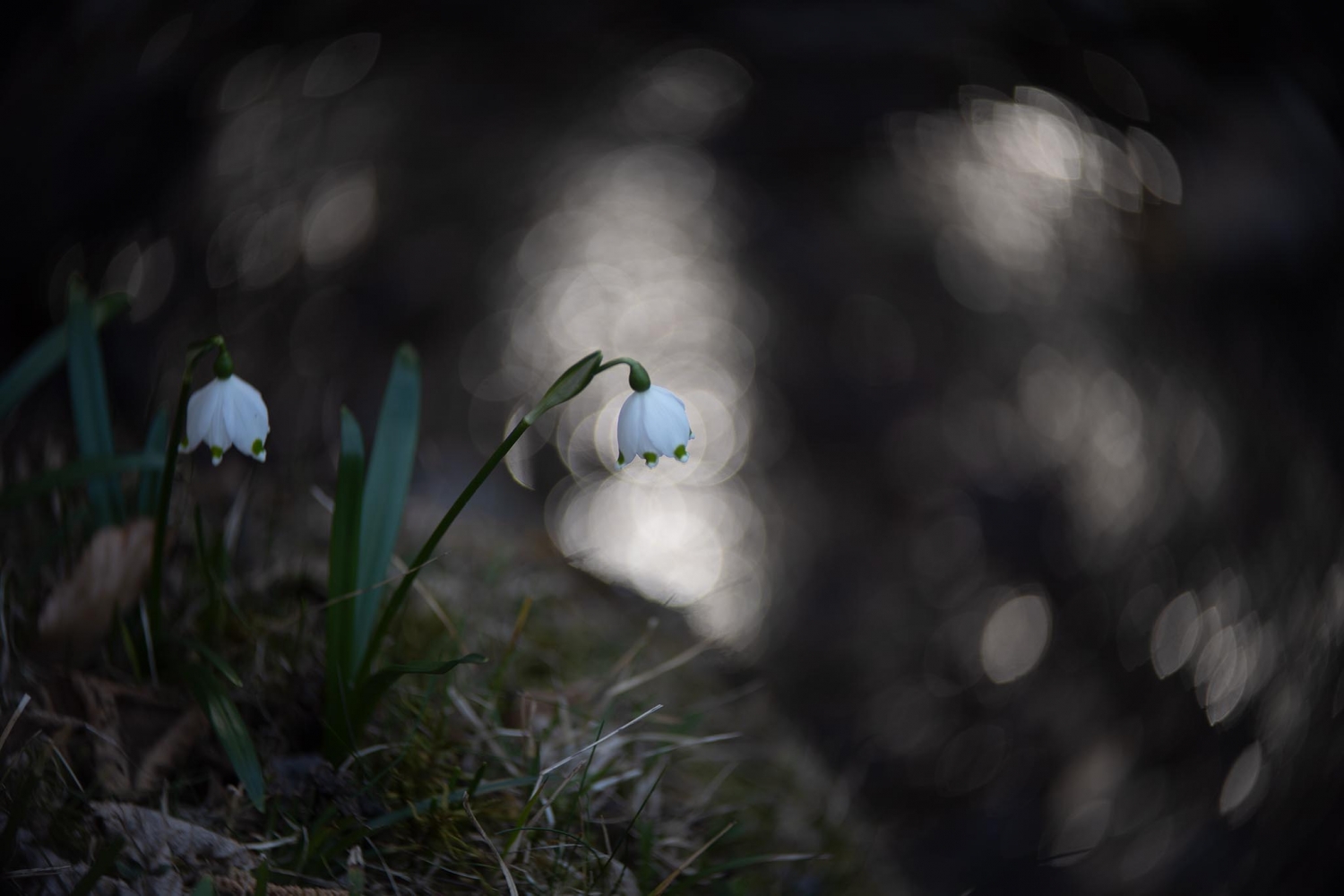
Finally, let's have a look at an uncorrected image from the Kinon 5 cm f1.6. This lens exhibits good sharpness in the center without highlight blooming. Not all Petzvals show this. I have a number which in fact show poor contrast and severe highlight blooming. The Kinon shows extreme astigmatism, much more than either of the Cine Navitars, In addition the bokeh -- COCs --show both bright and relatively thick bright rings at the circumference. This is somewhat similar to the 2 inch Cine Navitar and unlike most of my other Petzval lenses, which tend to have smoother COCs. One possible reason for the designer allowing such an extreme degree of astigmatism is that this lens was meant for 16mm projectors, so only a restricted area in the center needed to be well corrected. In my experience with other Petzval lenses for 16mm projectors of this focal length, none has such a large image circle, so obviously the astigmatism could be allowed to become extreme, but it makes for interesting images when used on FF. Interestingly, the Kinon is uncoated, but shows much better flare control than the coated Elgeets, even though I disassembled the latter and painted the interiors with an extremely matte black paint.
#1 Kinon Superior I 5cm f1.6
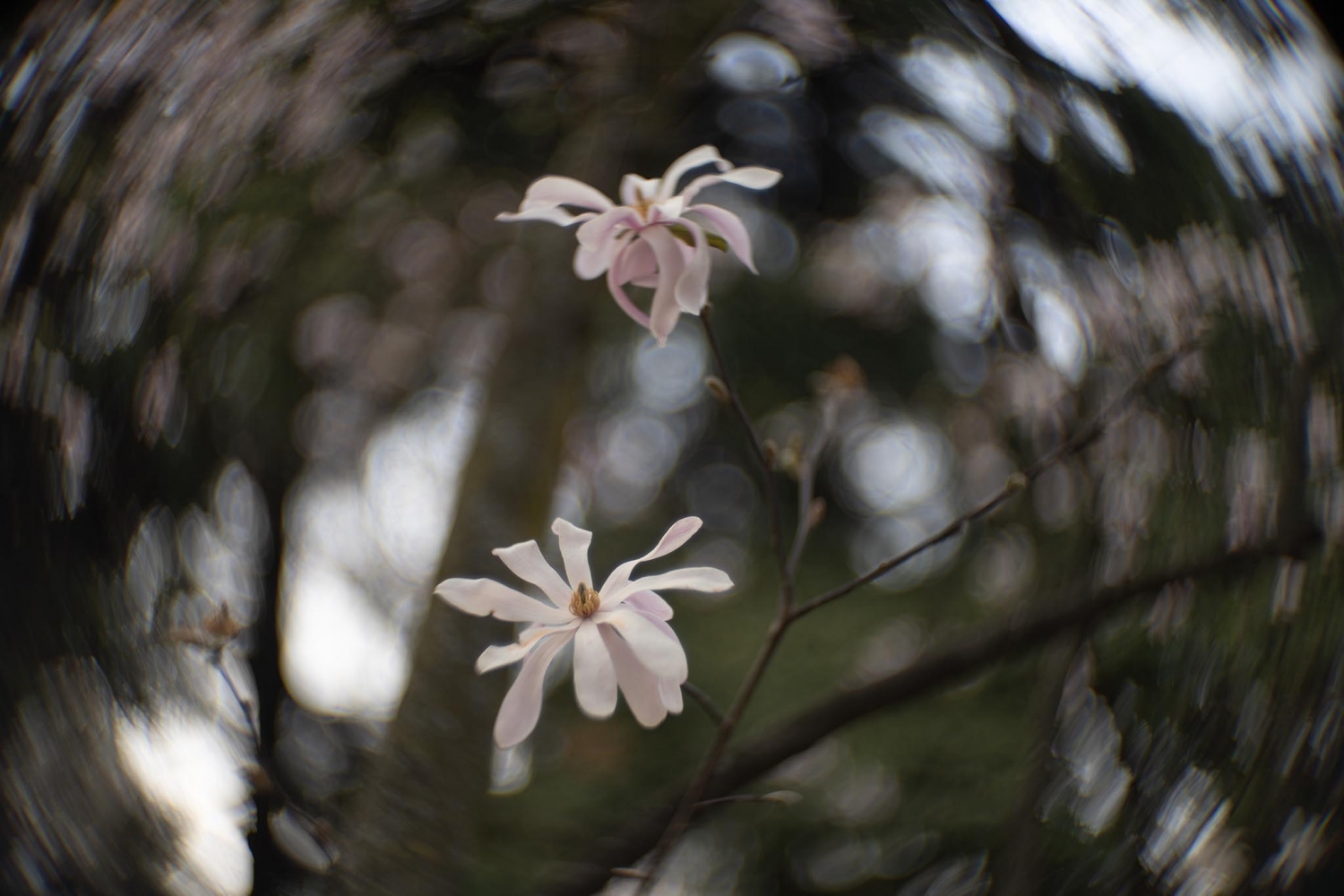
#2
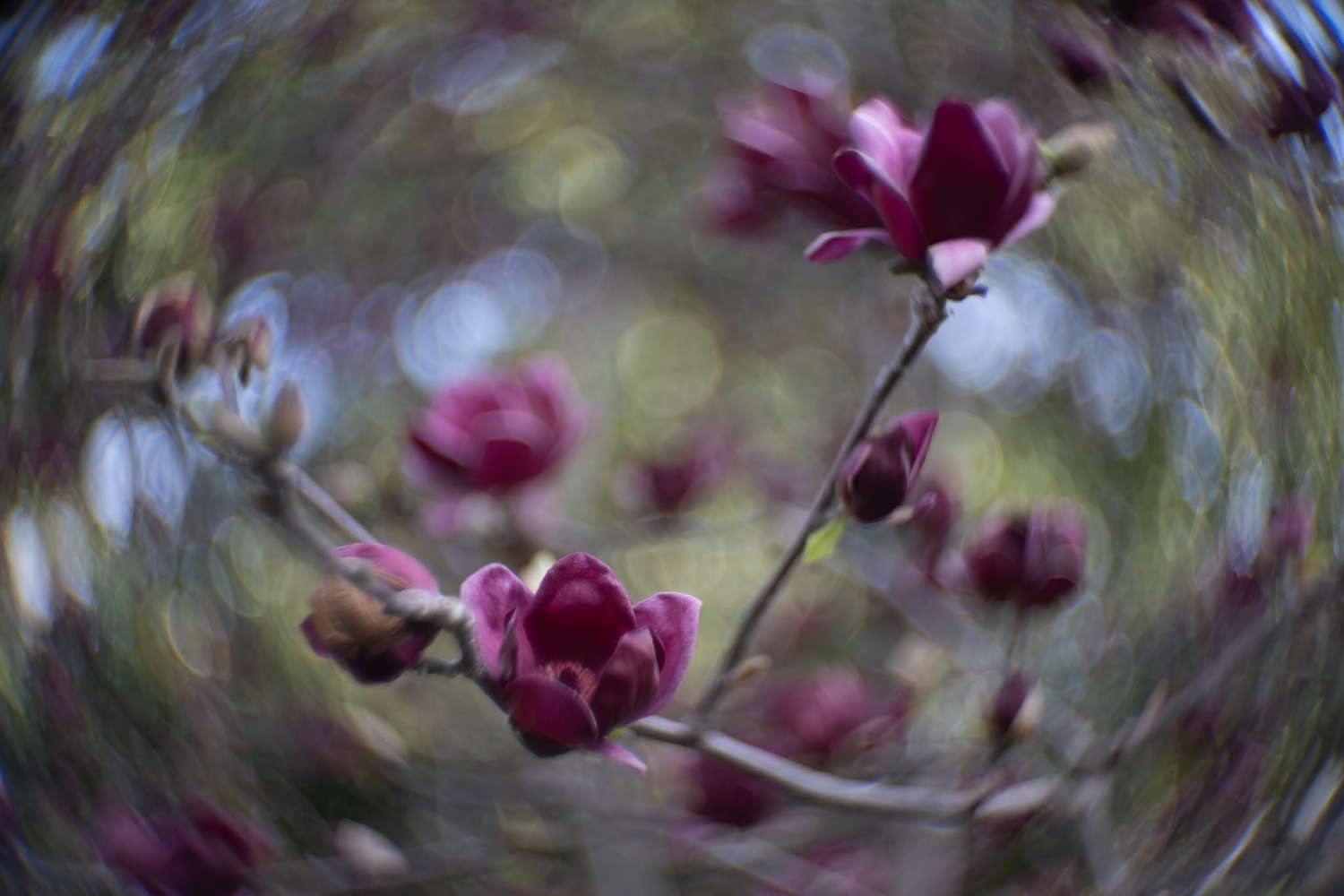
I have six or seven short projection Petzvals, and none exhibit the extremity of astigmatism or the ni-sen bokeh of this lens. Yes, it clearly has the character of a Petzval lens, but renders quite differently than the others, just as their is great variability in the look of 50mm double gauss lenses for 35mm FF, for example.
Finally, let's review the characteristics of Petzval lenses, a brilliant design for the time and with the available materials:
The Petzval lens itself is not an anastigmat but can be designed as one, and it can be compared to, say, a triplet lens.
The Petzval type lens has a large Petzval sum (the irony!), so the disadvantage is that astigmatism and the field curvature can’t be corrected at the same time.
However, this disadvantage is directly linked to the fact that the spherical aberration and the longitudinal chromatic aberration can be corrected very well.
The spherical aberration is corrected with the front lenses, and the longitudinal chromatic aberration can be corrected with the rear lenses.
The lens is relatively symmetrical about the stop, so the distortion can be corrected, as well as the coma and lateral/transverse chromatic aberration.
The coma and distortion can be corrected by having an opposite magnitude in the front and back groups. Balancing about the stop.
The lateral/transverse chromatic aberration can be corrected with the front and back groups.
The stop is far away enough from the lens that astigmatism can be corrected, Therefore, the field curvature can’t be corrected, meaning that the field of view can’t be
increased too much. Thus a narrow field of view and portrait lens usage is recommended.
The Petzval sum, and incidentally the field curvature cannot be corrected since the positive element and negative element in each of the lens groups are not separated.
_________________
Vintage lens aficionado |
|
| Back to top |
|
 |
iangreenhalgh1


Joined: 18 Mar 2011
Posts: 15685
Expire: 2014-01-07
|
 Posted: Sat Apr 01, 2023 6:46 am Post subject: Posted: Sat Apr 01, 2023 6:46 am Post subject: |
 |
|
iangreenhalgh1 wrote:
You keep stating that your horrible over the top processing doesn't change the character of the rendering of a lens and then go and provide strong evidence that it does.
Your Kinor clearly doesn't have strong overcorrection of SA, however, you have processed the images it produced in order to try to give it the harsh bokeh outlines characteristic of overcorrection of CA.
Just go and look at other people's work with the Kinor, where the smoothness of it's rendering (largely due to undercorrection of SA) is obvious, then compare it to yours where you've destroyed those qualities with processing....
Here's a great example of how the Kinor renders and how smooth it is, if you can't see how your aswful processing has destroyed the qualities of this lens then you needc an eye test.
https://www.flickr.com/photos/leo_roos/albums/72157689069117636/
_________________
I don't care who designed it, who made it or what country it comes from - I just enjoy using it! |
|
| Back to top |
|
 |
kymarto


Joined: 30 Nov 2016
Posts: 406
Location: Portland, OR and Milan, Italy
|
 Posted: Sat Apr 01, 2023 9:07 am Post subject: Posted: Sat Apr 01, 2023 9:07 am Post subject: |
 |
|
kymarto wrote:
| iangreenhalgh1 wrote: |
You keep stating that your horrible over the top processing doesn't change the character of the rendering of a lens and then go and provide strong evidence that it does.
Your Kinor clearly doesn't have strong overcorrection of SA, however, you have processed the images it produced in order to try to give it the harsh bokeh outlines characteristic of overcorrection of CA.
Just go and look at other people's work with the Kinor, where the smoothness of it's rendering (largely due to undercorrection of SA) is obvious, then compare it to yours where you've destroyed those qualities with processing....
Here's a great example of how the Kinor renders and how smooth it is, if you can't see how your aswful processing has destroyed the qualities of this lens then you needc an eye test.
https://www.flickr.com/photos/leo_roos/albums/72157689069117636/ |
Aha! Except that this is not the Kinon f1.6 but rather the standard version, which is around f2.2, and renders differently. It is a different lens. In fact, you can see similar bright edges in the COCs in a few of his pics as well.What do you think of his B&W of the apple? Personally I find his pics pallid and uninteresting, but live and let live. I've explained with the Elgeets the differences in spherical aberration correction, and whereas most of my Petzvals have smoother bokeh, the Kinon and a few others do not. Where is your evidence please that all Petzval lenses are undercorrected? Your personal opinions are one thing, misstating facts is another.
Here is another shot with the Kinon SOOC, corrected only for light fall off. Roos does the same BTW. The bright ring bokeh is quite obvious, similar to that of the 2" Elgeet and very different from that of the 3" Elgeet, the difference which you have not even attempted to address.
#1

_________________
Vintage lens aficionado |
|
| Back to top |
|
 |
eggplant


Joined: 27 May 2020
Posts: 516
|
 Posted: Sat Apr 01, 2023 10:15 am Post subject: Posted: Sat Apr 01, 2023 10:15 am Post subject: |
 |
|
eggplant wrote:
Additionally, maybe you could show us how you can reach overcorrected SA through editing with the image above.
Imo there are too many different samples here to put it down to editing. I think the Kiron f1.6 does have overcorrected SA.
I really don't see how you manage to apply an edit which can fundamentally change a pretty complex part of the image (out of focus highlights of varying sizes).
You would surely have to start with 'bokeh balls' who have a brighter outer ring than the centre, to be emphasised in an edit. This is a far more easier argument to make, and I'm not sure why you didn't start here...
I think lens manufacturers would be interested to hear how you do this in an edit rather than optically...
_________________
UK |
|
| Back to top |
|
 |
lohrentz
Joined: 01 Apr 2023
Posts: 2
Location: Madison WI
|
 Posted: Sat Apr 01, 2023 2:42 pm Post subject: Posted: Sat Apr 01, 2023 2:42 pm Post subject: |
 |
|
lohrentz wrote:
Two photos taken with my Kinon Superior:
#1
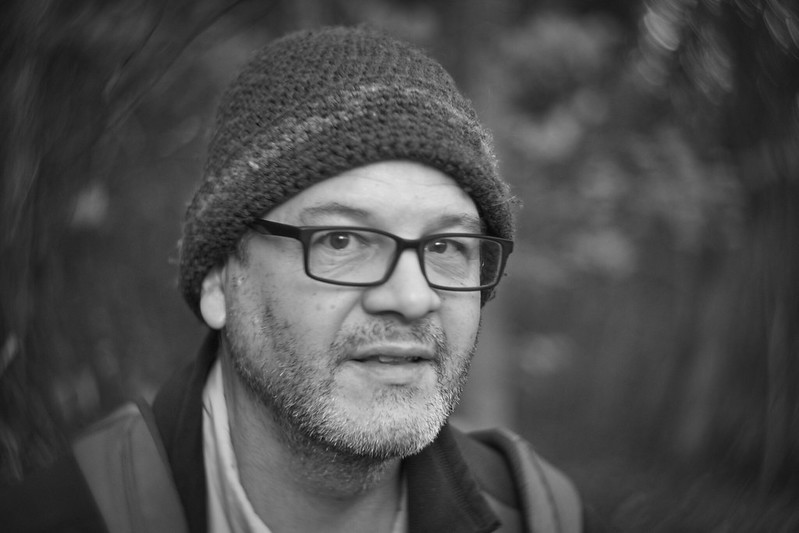
#2

Does anybody know what the aperture is on this lens? There is no indication. The front of the lens says:
Meyer Gorlitz Germany Nr. 121060 Kinon Superior f = 5cm
#3
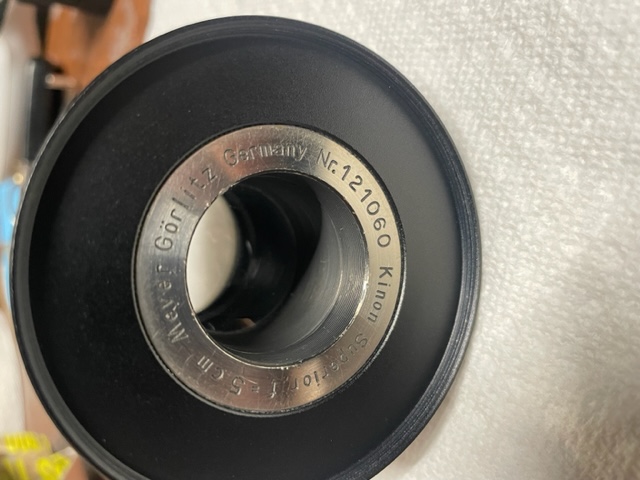
Sorry, I'm new here and it seems my uploads failed.
Last edited by lohrentz on Sat Apr 01, 2023 2:44 pm; edited 1 time in total |
|
| Back to top |
|
 |
calvin83


Joined: 12 Apr 2009
Posts: 7554
Location: Hong Kong
|
 Posted: Sat Apr 01, 2023 2:43 pm Post subject: Posted: Sat Apr 01, 2023 2:43 pm Post subject: |
 |
|
calvin83 wrote:
| lohrentz wrote: |
Two photos taken with my Kinon Superior:
#1

#2

Does anybody know what the aperture is on this lens? There is no indication. The front of the lens says:
Meyer Gorlitz Germany Nr. 121060 Kinon Superior f = 5cm
#3
 |
_________________
https://lensfever.com/
https://www.instagram.com/_lens_fever/
The best lens is the one you have with you. |
|
| Back to top |
|
 |
kymarto


Joined: 30 Nov 2016
Posts: 406
Location: Portland, OR and Milan, Italy
|
 Posted: Sat Apr 01, 2023 4:39 pm Post subject: Posted: Sat Apr 01, 2023 4:39 pm Post subject: |
 |
|
kymarto wrote:
I have heard that it is f2.2. Very easy to find out: measure the front diameter in cm and divide 5 by that number. I would like to know too
_________________
Vintage lens aficionado |
|
| Back to top |
|
 |
kymarto


Joined: 30 Nov 2016
Posts: 406
Location: Portland, OR and Milan, Italy
|
 Posted: Sat Apr 01, 2023 5:17 pm Post subject: Posted: Sat Apr 01, 2023 5:17 pm Post subject: |
 |
|
kymarto wrote:
| eggplant wrote: |
Additionally, maybe you could show us how you can reach overcorrected SA through editing with the image above.
Imo there are too many different samples here to put it down to editing. I think the Kiron f1.6 does have overcorrected SA.
I really don't see how you manage to apply an edit which can fundamentally change a pretty complex part of the image (out of focus highlights of varying sizes).
You would surely have to start with 'bokeh balls' who have a brighter outer ring than the centre, to be emphasised in an edit. This is a far more easier argument to make, and I'm not sure why you didn't start here...
I think lens manufacturers would be interested to hear how you do this in an edit rather than optically... |
It is possible to emphasize brightness transitions with the addition of microcontrast, what Adobe calls "Clarity". In addition sharpening can emphazise those transitions as well.
As an example I post three verisions of a photo with the Kinon. The first is absolutely SOOC. The second is minimally processed to remove the fall off in the corners. The third adds the amount of processing I normally do, with deconvolution sharpening. I personally do not find my proccessing "horrible" and "over the top", but obviously some others do, which is their right. However as I said, it is clear that the "bright ring" bokeh typical of overcorrection of spherical aberration was present in this lens from its manufacture in 1933, long before I was born. Finally I add one more shot, completely unprocessed to demonstrate that the bright rings most definitely exist, and finally finally an example of a Petzval with undercorrection of spherical aberration (Angenieux TV1 120mm f1.2 projection lens)
#1 SOOC
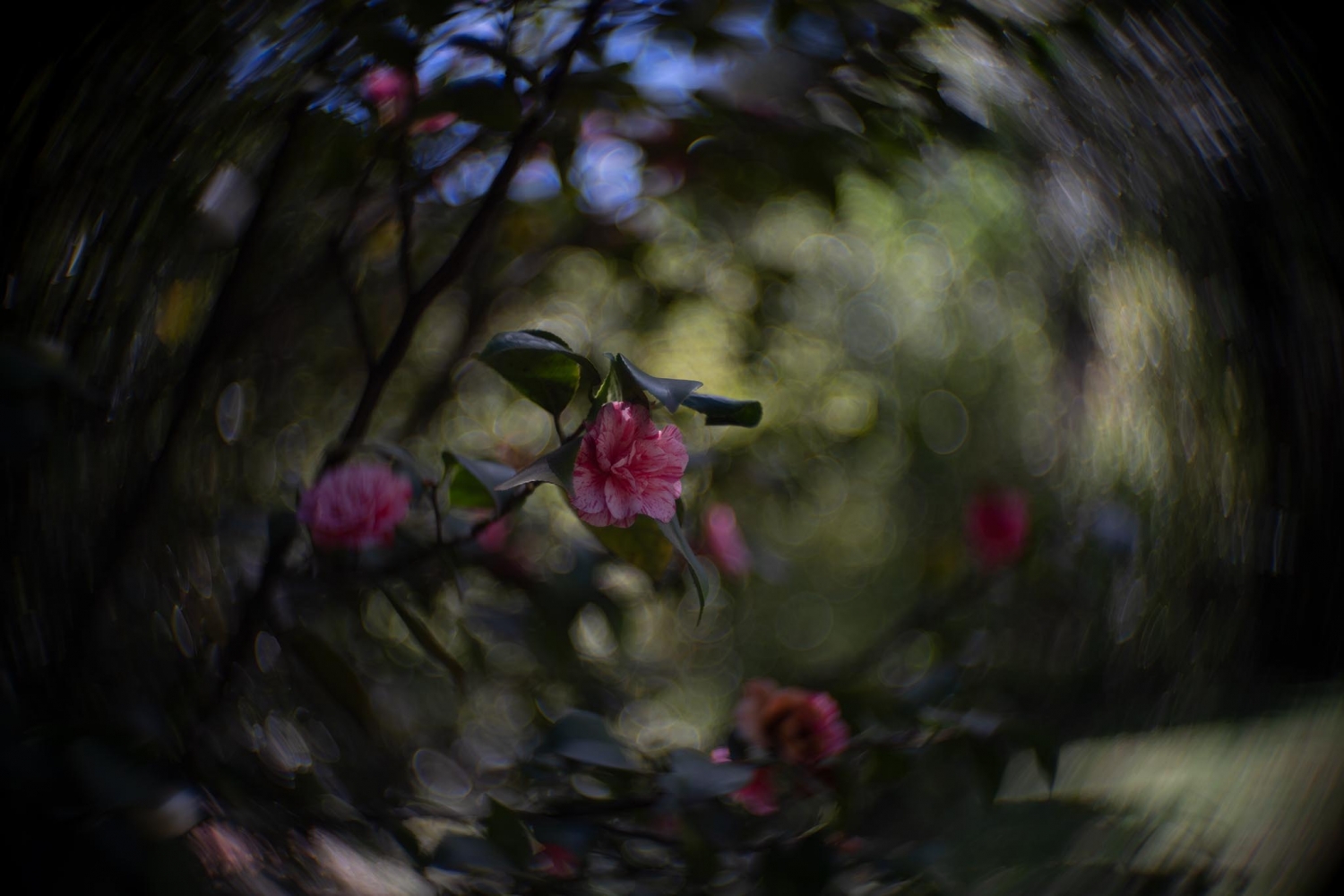
#2 Fall off removed
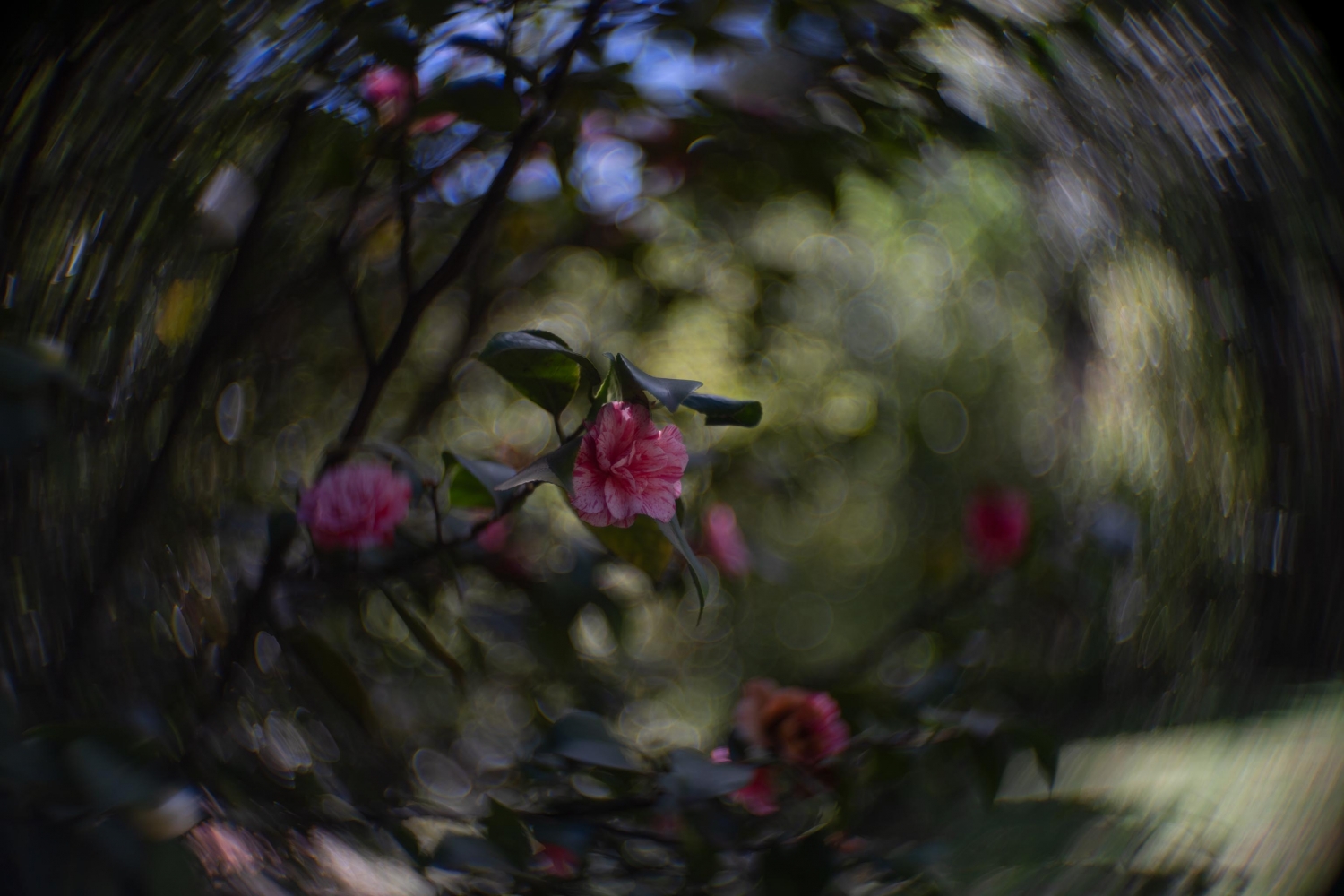
#3 Added microcontrast and sharpening
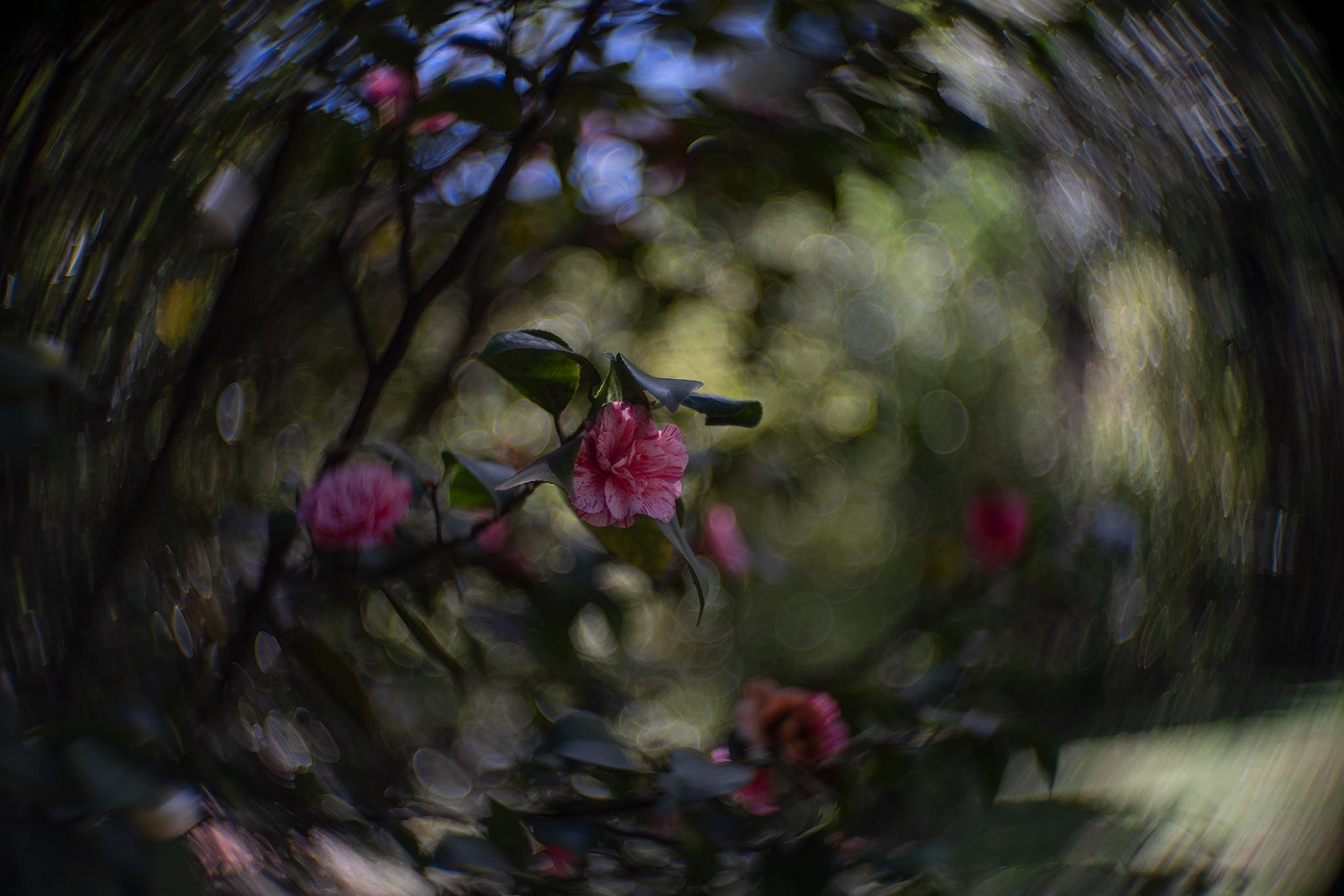
#4

#5
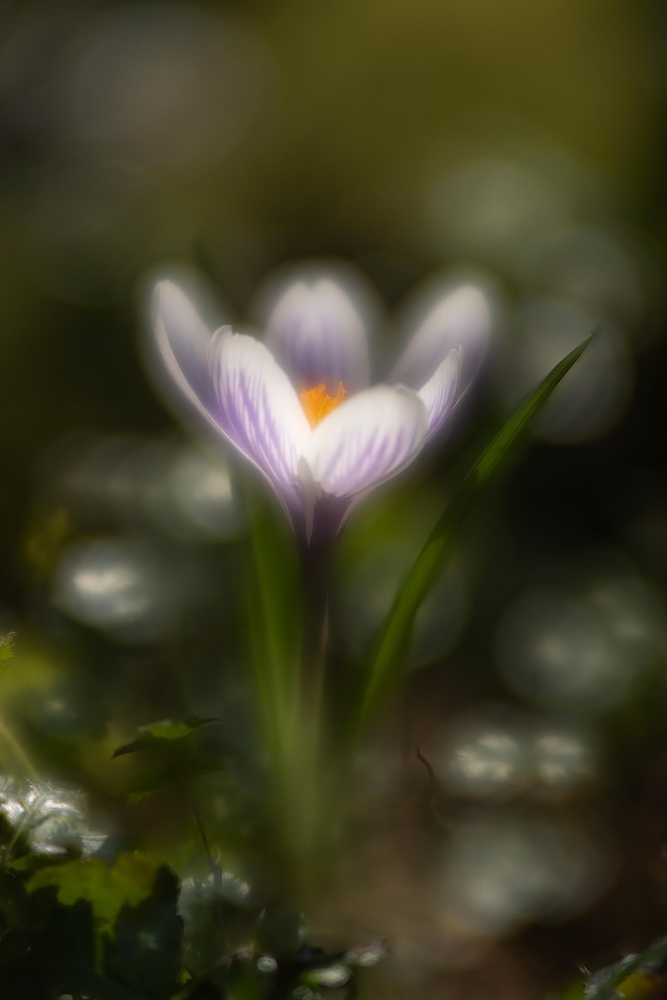
_________________
Vintage lens aficionado |
|
| Back to top |
|
 |
lohrentz
Joined: 01 Apr 2023
Posts: 2
Location: Madison WI
|
 Posted: Sat Apr 01, 2023 5:41 pm Post subject: Posted: Sat Apr 01, 2023 5:41 pm Post subject: |
 |
|
lohrentz wrote:
I measured the front at 27.5 mm, so aperture of 1.8, which is what I had guessed. |
|
| Back to top |
|
 |
eggplant


Joined: 27 May 2020
Posts: 516
|
 Posted: Sat Apr 01, 2023 6:13 pm Post subject: Posted: Sat Apr 01, 2023 6:13 pm Post subject: |
 |
|
eggplant wrote:
[quote="kymarto"]
| eggplant wrote: |
Additionally, maybe you could show us how you can reach overcorrected SA through editing with the image above.
Imo there are too many different samples here to put it down to editing. I think the Kiron f1.6 does have overcorrected SA.
I really don't see how you manage to apply an edit which can fundamentally change a pretty complex part of the image (out of focus highlights of varying sizes).
You would surely have to start with 'bokeh balls' who have a brighter outer ring than the centre, to be emphasised in an edit. This is a far more easier argument to make, and I'm not sure why you didn't start here...
I think lens manufacturers would be interested to hear how you do this in an edit rather than optically... |
It is possible to emphasize brightness transitions with the addition of microcontrast, what Adobe calls "Clarity". In addition sharpening can emphazise those transitions as well.
Yeah, I think I was on the wrong tack here. It is rather obvious, if you have a bright outline and a less bright centre of a bokeh ball, then the clarity filter applied to the whole image, will accentuate the difference.
It really is a matter of brightness in this two-dimensional image, in what I called 'a pretty complex part of the image'. And I should know the effects of taking clarity slider into negatives, it can be quite dramatic. Who doesn't edit enough photos this way to know... (me).
It would be interesting to think about lenses which count as having very overcorrected spherical aberration, and whether people consider them usable. I'm thinking beyond this. But I suppose my answer is heavy overcorrection is just as niche as heavy undercorrection for use.
_________________
UK |
|
| Back to top |
|
 |
iangreenhalgh1


Joined: 18 Mar 2011
Posts: 15685
Expire: 2014-01-07
|
 Posted: Sat Apr 01, 2023 6:22 pm Post subject: Posted: Sat Apr 01, 2023 6:22 pm Post subject: |
 |
|
iangreenhalgh1 wrote:

This picture from the Kinor shows clearly that it is absolutely a regular Petzval, it has all of the characteristics or a Petzval - a small, well defined area in the centre of the frame with the rest of the frame being a swirly mess, the amount of swirl & mess increasing with distance from the centre.
Nik plugins also have a microcontrast boosting feature similar to Adobe's Clarity called Structure, like Clarity, it is very useful but needs to be used carefully as too much ruins an image, making it synthetic and unreal.
_________________
I don't care who designed it, who made it or what country it comes from - I just enjoy using it! |
|
| Back to top |
|
 |
D1N0


Joined: 07 Aug 2012
Posts: 2491
|
 Posted: Sat Apr 01, 2023 6:46 pm Post subject: Posted: Sat Apr 01, 2023 6:46 pm Post subject: |
 |
|
D1N0 wrote:
I rarely use clarity for bokeh shots, because it has a profound effect on the bokeh. It is better to use sharpening. This will improve clarity on the in focus bits but not affect bokeh.
_________________
pentaxian |
|
| Back to top |
|
 |
kymarto


Joined: 30 Nov 2016
Posts: 406
Location: Portland, OR and Milan, Italy
|
 Posted: Sat Apr 01, 2023 8:11 pm Post subject: Posted: Sat Apr 01, 2023 8:11 pm Post subject: |
 |
|
kymarto wrote:
| lohrentz wrote: |
| I measured the front at 27.5 mm, so aperture of 1.8, which is what I had guessed. |
Please make sure you are measuring the entrance pupil diameter, and not the opening in the lens body. TBH I doubt that it is f1.8. There is a Kinon Superior f1.8 that has a larger barrel (~41mm) for the front lens element. Yours, not marked as a f1.8, almost certainly is slower.
_________________
Vintage lens aficionado |
|
| Back to top |
|
 |
iangreenhalgh1


Joined: 18 Mar 2011
Posts: 15685
Expire: 2014-01-07
|
 Posted: Sat Apr 01, 2023 8:43 pm Post subject: Posted: Sat Apr 01, 2023 8:43 pm Post subject: |
 |
|
iangreenhalgh1 wrote:
| D1N0 wrote: |
| I rarely use clarity for bokeh shots, because it has a profound effect on the bokeh. It is better to use sharpening. This will improve clarity on the in focus bits but not affect bokeh. |
Exactly.
Even better - don't apply any processing to the bokeh areas at all, use the selection tools to select just the in-focus area and apply your sharpening and micro-contrast adjustments to just that area.
_________________
I don't care who designed it, who made it or what country it comes from - I just enjoy using it! |
|
| Back to top |
|
 |
kymarto


Joined: 30 Nov 2016
Posts: 406
Location: Portland, OR and Milan, Italy
|
 Posted: Sun Apr 02, 2023 9:48 pm Post subject: Posted: Sun Apr 02, 2023 9:48 pm Post subject: |
 |
|
kymarto wrote:
| iangreenhalgh1 wrote: |
| D1N0 wrote: |
| I rarely use clarity for bokeh shots, because it has a profound effect on the bokeh. It is better to use sharpening. This will improve clarity on the in focus bits but not affect bokeh. |
Exactly.
Even better - don't apply any processing to the bokeh areas at all, use the selection tools to select just the in-focus area and apply your sharpening and micro-contrast adjustments to just that area. |
Personally my interests have evolved beyond classical photorealism. If images touch me, I could care less if they are processed or non-processed or how much they are processed. I personally reject the notion that there is only one way of presenting images that is valid. I do what pleases me, and actually I don't care if it pleases others. Luckily, apart from the critics, there are people who have expressed appreciation for my work, and I am happy if they find something in my images. I have had a number of exhibitions of my "non-standard" images in Germany and Japan that were well received and received good reviews. If people don't like what I do there are plenty of others with whom they might connect. In painting, as in photography, there are manifold styles. As much as I love renaissance painting, I am glad that impressionism came along. As much as I love the baroque German composers, I can also appreciate the evolution, through Mozart, Beethoven Debussy, Chopin, Stravinsky, and into jazz.
Fux's great work on counterpoint, "Gradus ad Parnassum" set out very strict rules on counterpoint in the early 1700s, and god forbid that anyone should write an ascending minor sixth that was not immediately followed by a downward motion. Sevenths were apostasy. I love the music that followed Fux's rules, but I also love music that broke them.
_________________
Vintage lens aficionado |
|
| Back to top |
|
 |
|
|
